Reverse engineering stage 13: How do teams prepare for a Tour de France mountain time trial?
In a discipline where marginal gains can mean the difference between winning and losing, how do teams get an edge on the competition?
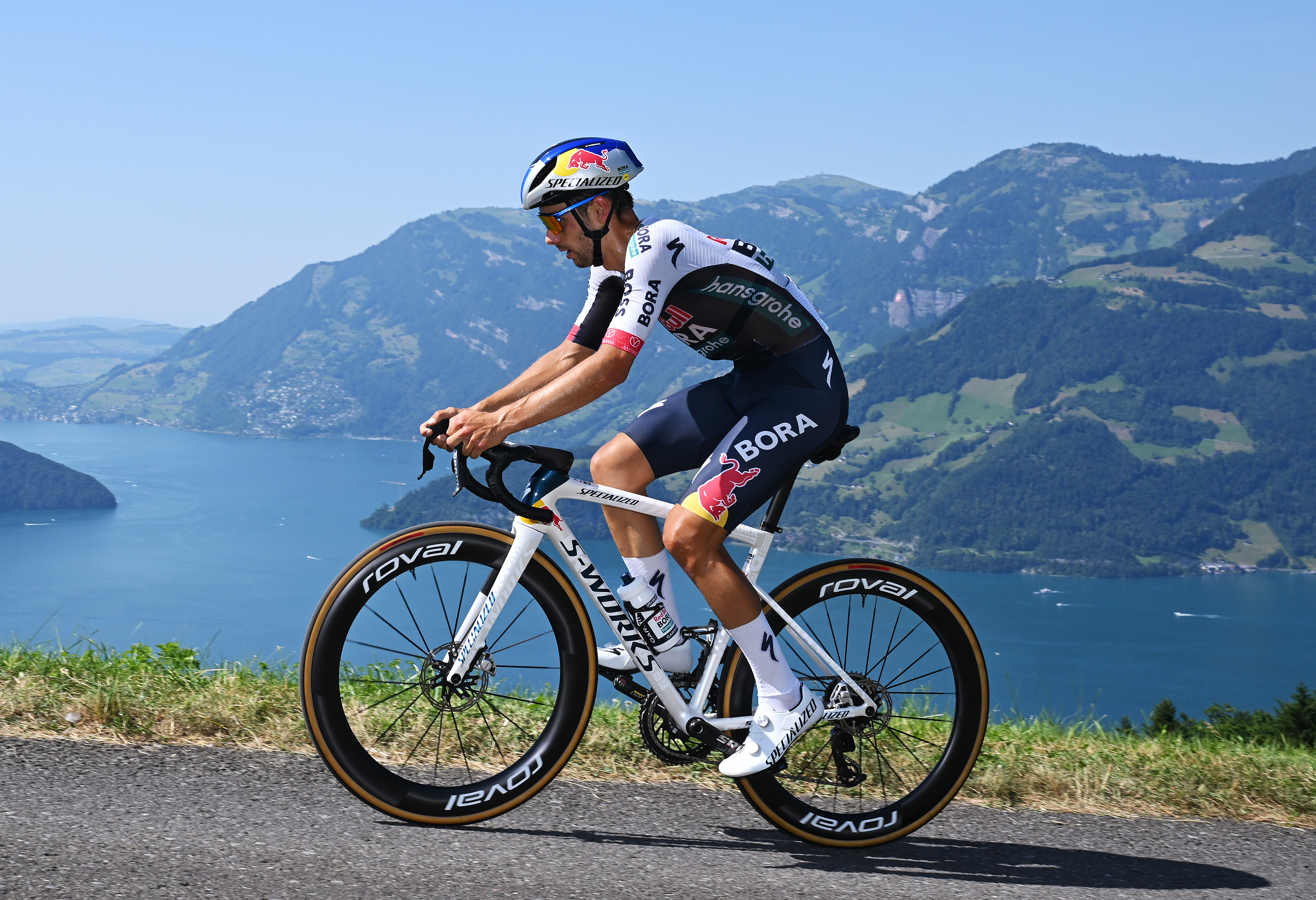
When choosing equipment and planning a pacing strategy, what's the best way to tackle a time trial that's both flat and brutally mountainous?
The 2025 Tour de France poses exactly this question, as Stage 13 sees the return of the ever-decisive mountain time trial.
At just 10.9km long, the route takes the riders over a short but incredibly challenging course, which includes a flat first section followed by a mountainous second section.
The first 2.9km are relatively flat, but racers will soon hit the ascent of the Peyragudes, an 8km climb with an average gradient of 7.9% and sections as steep as 16%. In total, riders will climb 627 meters on the 10.9km stage.
These types of time trial events have often been the deciding factor when it comes to a rider's tilt at the general classification, such as Stage 16 of the 2023 Tour de France, where Jonas Vingegaard made his killer blow to Tadej Pogačar’s title hopes in the time trial; or the penultimate stage of the 2023 Giro d’Italia, where Primož Roglič usurped Geraint Thomas to take the pink jersey at the final hurdle.
These unique courses present a difficult problem for teams and their performance engineers, whose job it is to find the optimal setup for the fastest time.
On the one hand, the first part of the course is flat and will suit the use of a time trial bike. But on the other hand, these bikes are heavier, with geometry less suited to steep climbing than their road bike counterparts.
The latest race content, interviews, features, reviews and expert buying guides, direct to your inbox!
This is why these sorts of events often see a myriad of different options chosen, based on each team's available equipment, its performance modelling, and to a degree, rider preference.
As a result, we will likely see bike changes at the foot of the climb, as teams spend a few seconds switching from aero time trial bike to a lightweight road bike, hoping to make even more time back on the climb.
We will also see road bikes being used for the whole stage, but with clip-on aero bars and disc wheels; time trial bikes with lightweight climbing wheels; and maybe even some riders doing the entire course on their time trial bike in an aero time trial position.
To find out more about what goes into these decisions and the overall preparation for such a decisive grand tour stage, Cyclingnews spoke with Dan Bigham, performance engineer at Red Bull-Bora-Hansgrohe.
The team is home to Primož Roglič, a four-time grand tour winner and Tour de France contender, who will be hoping his time trialling prowess will see him climb the Tour de France general classification standings on stage 13.
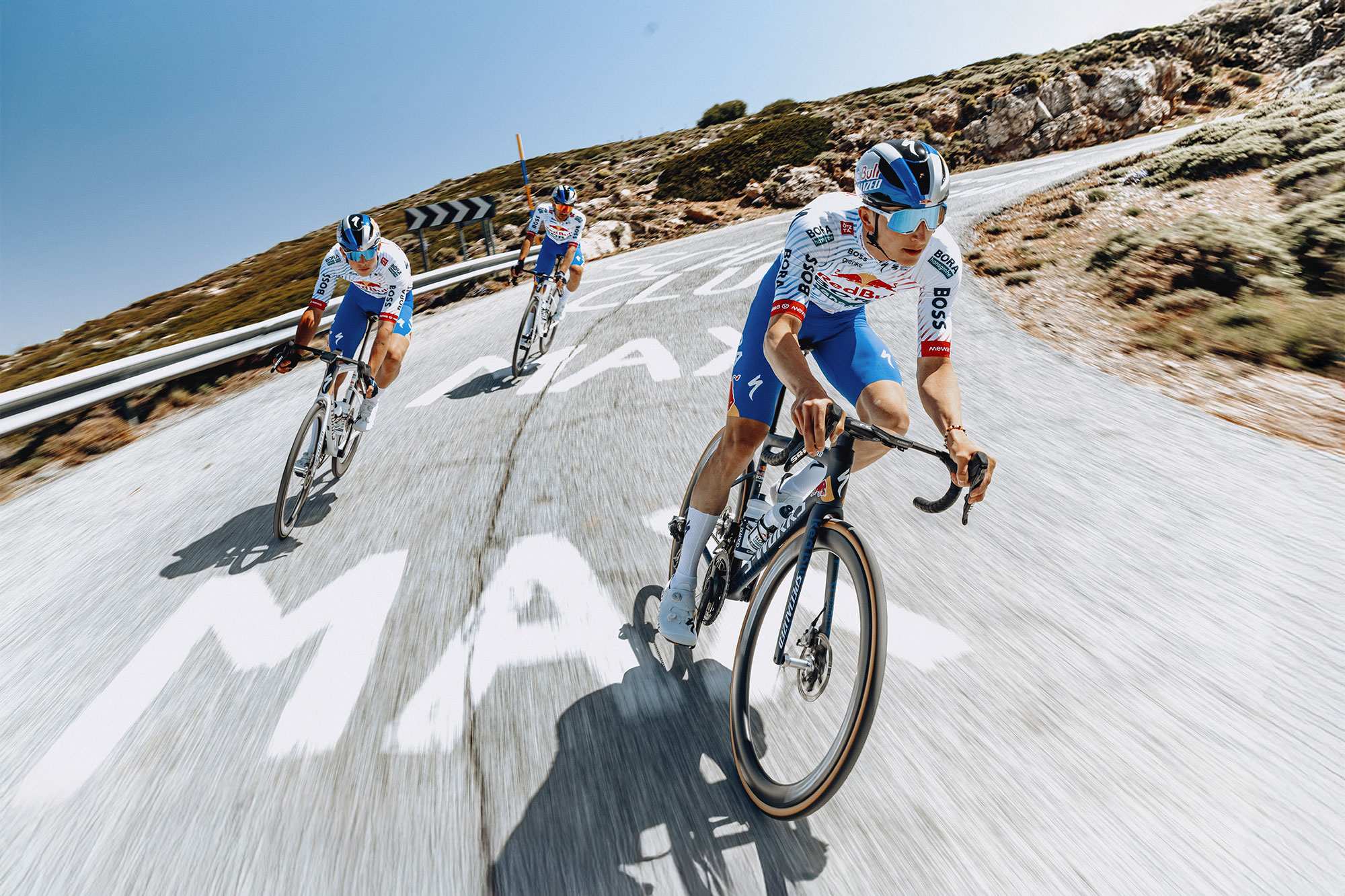
“As soon as we knew the course," Bigham explained, when asked how far out his preparations began. "We could then utilise tools to objectively understand the demands of the event and therefore begin the optimisation process.”
The 2025 Tour de France route was announced on October 29, 2024, meaning Bigham, and likely his contemporaries, have spent the past 262 days analysing the course and all the details around it to determine the best way to tackle it.
Part of this also involves a recce of the course itself, as teams do for most of the route of key events like the Tour de France. This helps the team better understand the properties of the course, and also helps riders themselves prepare for its demands.
In terms of specific preparation for Roglič ahead of this stage, Bigham remained tight-lipped, but did let us in on his working process.
“Once you understand the demands of the event, you can then both optimise the equipment setup and train to those demands," he explained. "Roglič and his coach, Marc Lamberts, have used these to prepare accordingly, knowing exactly what is required and therefore how to train to meet those demands.”
One of the complications on this course, which involves a short downhill section where riders will be hitting over 60km/h, is gear choice, but when asked about Roglič's setup, Bigham's tight-lipped tone continued. "He will go for the optimal gear choice," he said.
Roglič has good experience in mountain time trials. Looking back at Stage 20 of the 2023 Giro d’Italia, even with a mechanical, Roglič was able to wrestle the pink jersey from Geraint Thomas. Roglič maintained his customary high cadence for that climb, famously using a wide-range cassette and 1x SRAM gravel groupset. Thomas, by comparison, had what looked to be a far bigger gear, and in turn a more laboured cadence on the steep upper sections of the climb.
At the power output that these riders are doing, a cadence of 90-100 has been found in research to be more efficient and sustainable, as lower cadences vastly increase the torque demands.
Red Bull-Bora-Hansgrohe is sponsored by SRAM and uses its latest Red AXS groupset. This can be fitted with a 10-44t cassette that gives a very broad range of gears for both high- and low-speed.
Pair that with a 54/44 chainset, and you have a gear combination that, with 170mm cranks and 28mm tyres, can still be pedalled at 16km/h at 100rpm. There is, of course, a trade-off with larger jumps in gear, but this is something the teams will have worked on to optimise the right gear ratios for the climb while taking into account jumps and drivetrain efficiency.
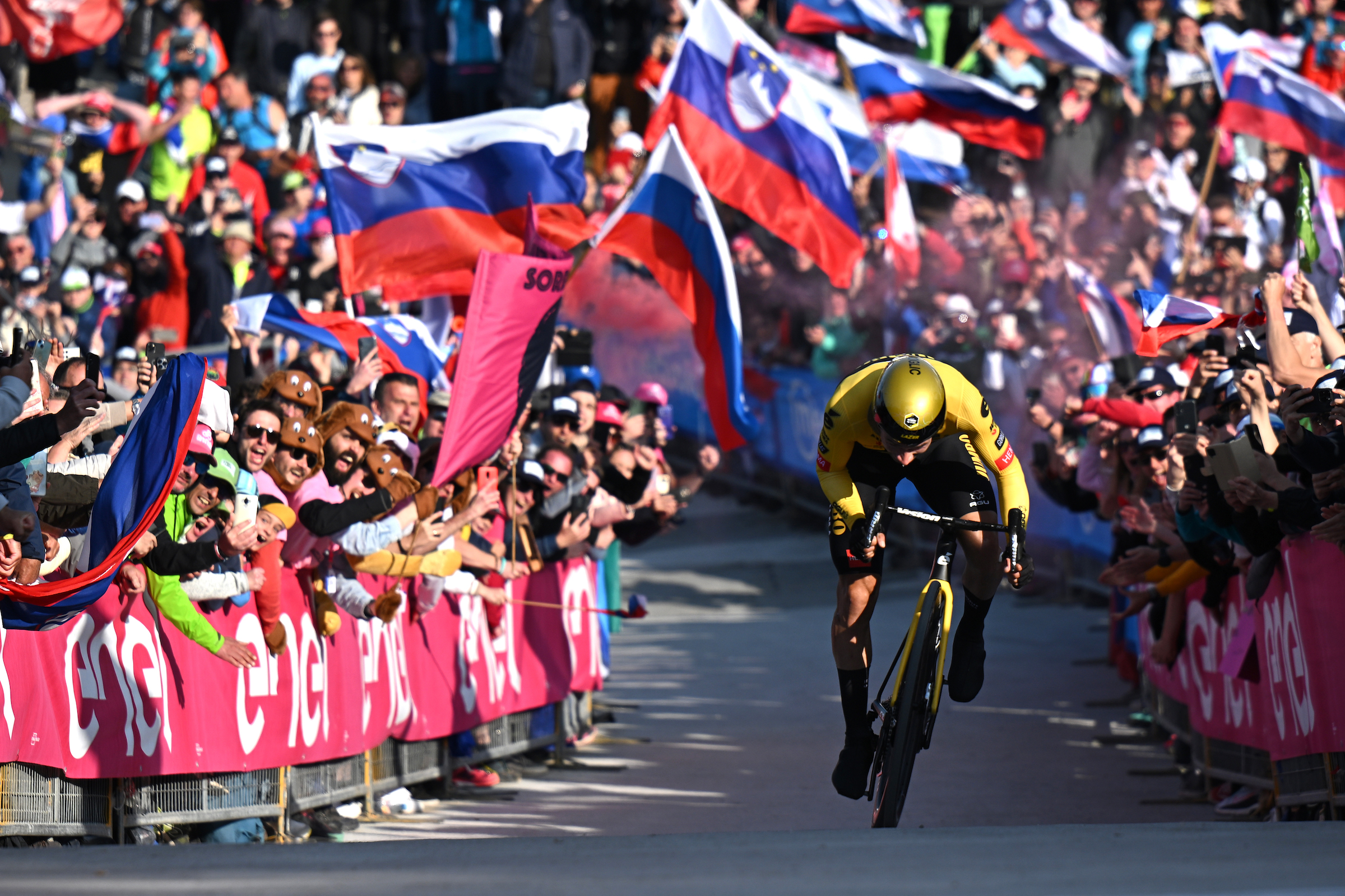
Another key problem facing teams when it comes to these types of time trials is understanding what type of bike to use, and if the time spent swapping from a time trial to a road bike at the foot of a climb will be recovered by the faster bike.
In Stage 16 of the 2023 Tour de France, Pogačar changed bikes at the foot of the final climb, whereas Jonas Vingegaard, who won the stage, remained on his time trial bike tucked into an aero position.
Being an expert in aerodynamics, Bigham was able to share some very interesting insight with us about the balance of weight to aero on this mountain time trial stage of the 2025 Tour de France.
“The trade-off on this course is ~0.016m²/kg. So if you gain more than 0.016m² CdA reduction for a 1kg increase in mass, you have a net faster solution. This is a simplified sensitivity since aerodynamic performance varies with air speed and yaw amongst other variables, but is a very good rule of thumb.”
CdA stands for Coefficient of drag x Area, and is a measure of how aerodynamic something is. The 'Coefficient of drag' portion is effectively how easily airflow passes over the item's surface (in this case the rider and the bike), and is affected by shape and surface roughness, among other things, while Area is the measure of the item's size.
A typical pro cyclist's overall CdA is generally between 0.2m² and 0.3m², depending on the rider's size, position, clothing, equipment and more.
In Bigham's rule of thumb on this course, an aerodynamic improvement of 0.016m² will save the same amount of time in the opening few kilometres, as a kilogram of weight saved on the climb.
He also explained that the answer to whether a bike swap is faster or slower depends on the options you have available.
"The heavier your time trial bike, the closer you are to a bike swap being optimal. Above about a 1.5kg mass difference between a TT and a road bike, a bike swap becomes the optimal solution. A road bike in normal road position is, by some margin, the slowest solution. The optimal solution is a time trial bike at 6.8kg, quite the challenge though!”

The warm weather forecast for Friday's stage adds another layer of complexity. Climbing at high intensity is already a major physical challenge, but the reduced speed on the ascent means riders get less of the cooling airflow they need. To make matters worse, the design of their aero equipment often deprioritises low-speed ventilation in favour of high-speed aerodynamics.
This trade-off between aerodynamics and thermoregulation, Bigham said, is another area where data is needed.
"Having good aerodynamic data as well as thermal data enables a clear comparison to be made. There is also a psychological component here that is well-documented in the literature, that cooling the head has a disproportionate effect on perceived temperature.
"Considering that your body reacts to what it perceives and not the actual temperature itself, it is very important to consider this effect. There are some areas where you can take a small aerodynamic hit for a meaningful impact on perceived or actual cooling; however, in general, increasing cooling (convective heat transfer/evaporation of sweat) simply means exposing more body surface area to high-velocity air flow.
"Typically, these areas are also very important aerodynamically, which makes it a challenging trade-off to create an efficient solution for.”
But unlike bike swaps, once in a race environment, a rider can’t switch their helmet. One tool that Bora-Hansgrohe utilises to aid cooling and build up a bank of information is the Core temperature sensor, which can be used to measure a rider's core and skin temperature, amongst other metrics.
Red Bull-Bora-Hansgrohe have the Specialized TT5 time trial helmet, which features no vents - although some riders use a very trimmed-down visor- and the S-Works Evade 3 aero road helmet with more vents. With the heat, the brand's heavily vented S-Works Prevail 3 vented helmet could even be an option.
Of course, generally speaking, the more ventilated a helmet is, the less aerodynamically efficient it is, but then with the majority of the time on course being spent at low speed and high intensity, that greater perceived cooling could have a hugely impactful psychological effort for the rider.
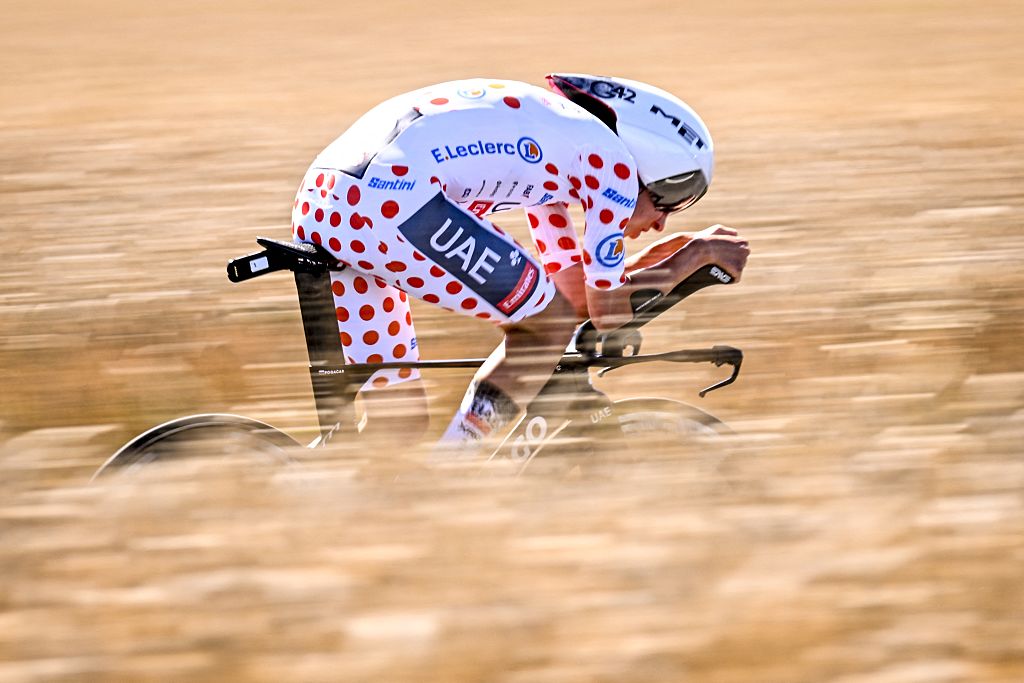
This also applies to elements like the skinsuit, which can be less air permeable/breathable to improve aerodynamic performance, but at a temperature management cost.
At the 2024 Olympics, Great Britain's Ethan Hayter experienced overheating during the Omnium in the same suit that Team GB used for the Team Pursuit. The difference, however, is that tolerable heat over four minutes can be very different over 15+ minutes. Optimal means needing to balance all aspects of performance, and a more breathable skinsuit might be slower aerodynamically, but can still be faster overall with all factors considered.
But there is another factor of aerodynamics, and that is how different garments perform at different speeds.
Without going too in-depth into things like Reynolds Numbers and CdA figures, skinsuits are often textured to make the suit as fast as possible at a given range of speeds.
For example, Pogačar uses a specific climbing jersey with wide rib spacings on the sleeves, which, for him, is most aerodynamically efficient at around 25-35km/h, aka climbing speeds. In a time trial, however, he uses a dual-layered skinsuit setup, which is more aerodynamically efficient at speeds over 50km/h.
Given that some of Friday's course will be ridden at over 50km/h, and other parts more around 25km/h, Bigham explained that optimising this area of equipment "again, comes down to having good models that underpin your simulations so that you can objectively make those comparisons between different potential setups, especially when it comes to extreme speed and yaw sensitivities."
"We are confident in those decisions," he continued. "The aerodynamic drag energy distribution over the entire course is about 55% in the first 4km flat section and 45% over the climb, so it is an interesting trade-off.”
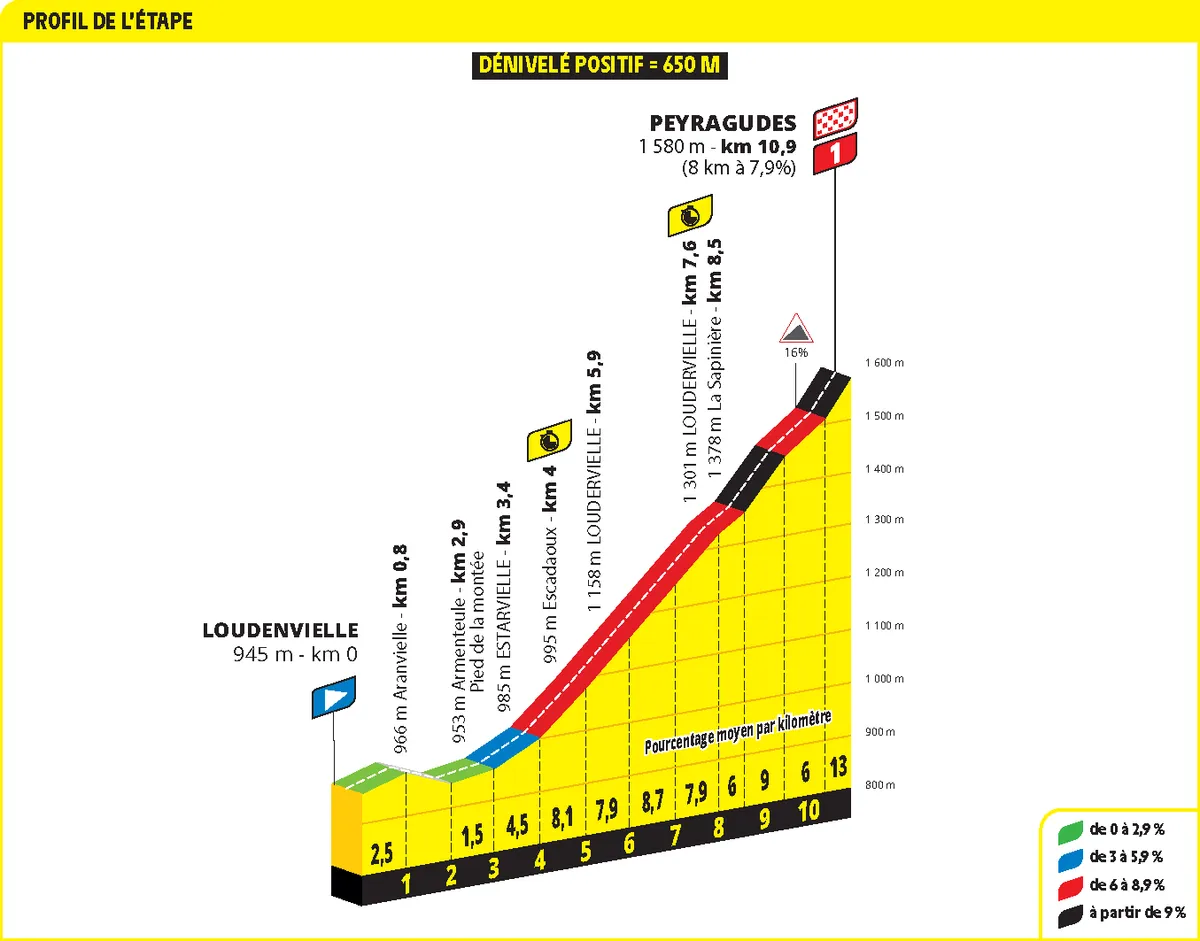
This presents a very interesting challenge for the team, as aero optimisation for the first 4km will have a large impact on relative speed over that section, and less of an impact on the climb.
However, more time is spent on the climb, and using something that is more aerodynamic for the first 4km completed in 4-5 minutes could result in spending the next 6.9km - which will take more like 15-16 minutes - in both a less aerodynamic setup where aero performance is less of a factor, but also a setup that might impact body temperature and perceived exertion if things get too warm.
It’s a difficult trade-off to balance, and this is where performance modelling comes into play.
Teams will often use simulations to assess how to best achieve the optimal performance with given data. In this situation, knowledge is power, and this is part of why we see teams measuring and analysing so many metrics of riders now. Core body temperature, respiratory rate, lactate, sweat readings, these are just a few of the metrics now being measured along with power, heart rate, and cadence. Some teams even measure on-bike coefficient of drag.
With all of this data, you can better simulate the performance of a rider using known metrics of the course, such as distance, terrain, gradient, coefficient of rolling resistance, drivetrain efficiency, air pressure and temperature.
By putting all of this data into powerful modelling systems, much the same way F1 teams do with simulators and computer fluid dynamics software, you can both predict performance more accurately, as well as determine what the optimal setup or pacing is for a rider to perform the fastest time they possibly can.
This is part of the reason why we see far more teams hiring engineers and physicists. Some teams and staff are calling for a reduction in this data, but there's a good argument that it's a big reason as to why the Tour de France is getting ever faster. Teams can better model the demands of specific stages and backwards engineer solutions to achieve the fastest possible times.
So when you’re watching stage 13 of the 2025 Tour de France and seeing riders tackle this time trial, just remember that performance engineers have been working towards this day for the better part of a year, and that every single element of equipment that they are using has been selected to be the fastest possible option for this specific stage for each specific rider.
It’s a truly fascinating performance process.
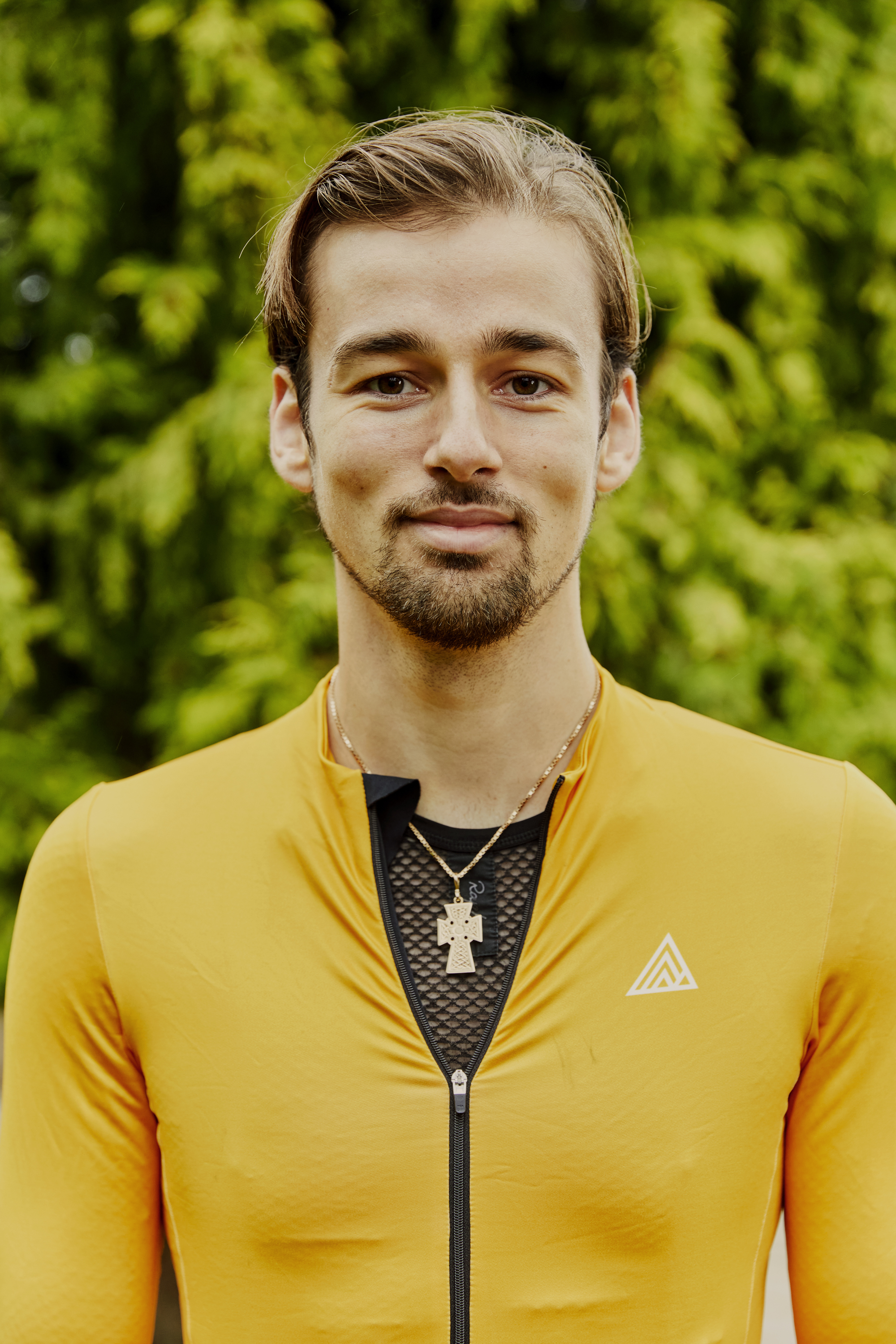
Freelance cycling journalist Andy Turner is a fully qualified sports scientist, cycling coach at ATP Performance, and aerodynamics consultant at Venturi Dynamics. He also spent 3 years racing as a UCI Continental professional and held a British Cycling Elite Race Licence for 7 years. He now enjoys writing fitness and tech related articles, and putting cycling products through their paces for reviews. Predominantly road focussed, he is slowly venturing into the world of gravel too, as many ‘retired’ UCI riders do.
When it comes to cycling equipment, he looks for functionality, a little bit of bling, and ideally aero gains. Style and tradition are secondary, performance is key.
He has raced the Tour of Britain and Volta a Portugal, but nowadays spends his time on the other side of races in the convoy as a DS, coaching riders to race wins themselves, and limiting his riding to Strava hunting, big adventures, and café rides.
You must confirm your public display name before commenting
Please logout and then login again, you will then be prompted to enter your display name.
